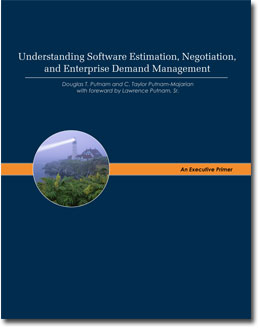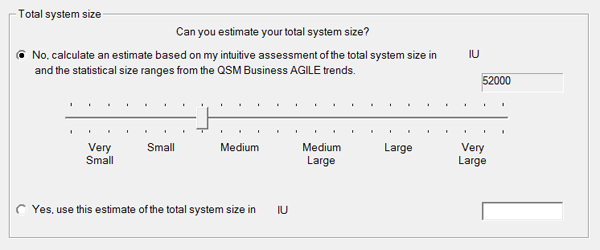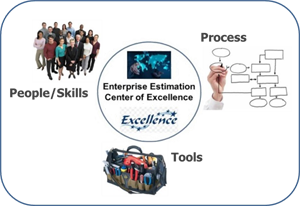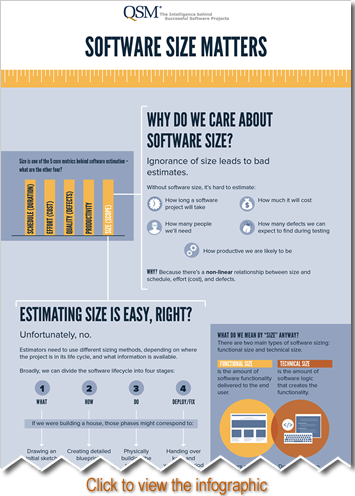Should Task Planning Occur Before Software Estimation?
I work for QSM, a leading software project estimation and demand management company. We focus on top-down estimation, meaning we figure out the total project duration and effort before any detailed planning occurs. We use SLIM-Estimate also known as the Putnam Model. Larry Putnam Sr. introduced SLIM in 1978. It is one of the leading software estimation tools in the world, validated with over 35 years of industry leading research and updated regularly with the latest technologies.
Many people call us for help with team size software project estimation, they want to see how many people it’s going to take to deliver a specified amount of functionality within a certain duration and budget. At the time they call us they are often using task level planning tools to try to figure this out.
The problem is that it’s tough to allocate people and the number of hours they will work when they haven’t figured out the specific requirements of each task and when they haven’t estimated the total duration and effort for the overall system. A manager could spend days creating a task level plan that doesn’t add up to the overall project duration and budget that is needed to deliver the functional requirements. When it doesn’t add up then re-planning has to take place costing more time and money. This is why QSM recommends estimating the big picture first, the scope level.


 I have been a software project estimator for 20 years. Like many people who have worked a long time in their profession, I find myself applying my work experience to other events in my life. So, when a family member tells me that he or she will be back from a trip into town at 3:30, I look at their past performance (project history) and what they propose to do (project plan) and add an hour. Usually, I am closer to the mark than they are.
I have been a software project estimator for 20 years. Like many people who have worked a long time in their profession, I find myself applying my work experience to other events in my life. So, when a family member tells me that he or she will be back from a trip into town at 3:30, I look at their past performance (project history) and what they propose to do (project plan) and add an hour. Usually, I am closer to the mark than they are.
 People – Finding people with the right characteristics and developing their skills;
People – Finding people with the right characteristics and developing their skills;
 How in the world does landing on an aircraft carrier relate to
How in the world does landing on an aircraft carrier relate to